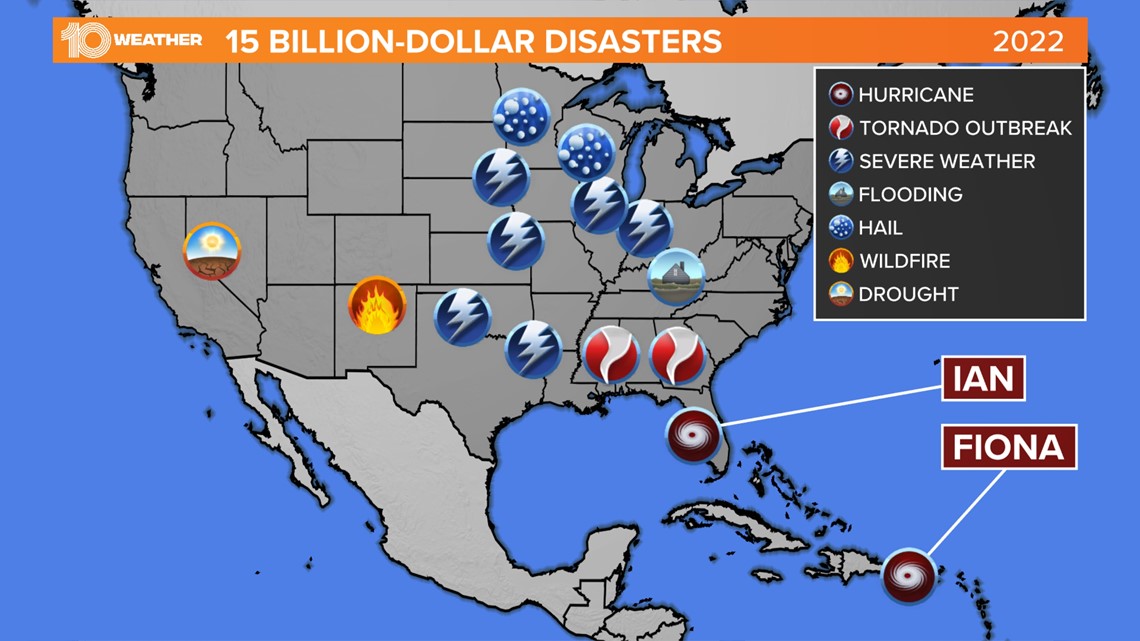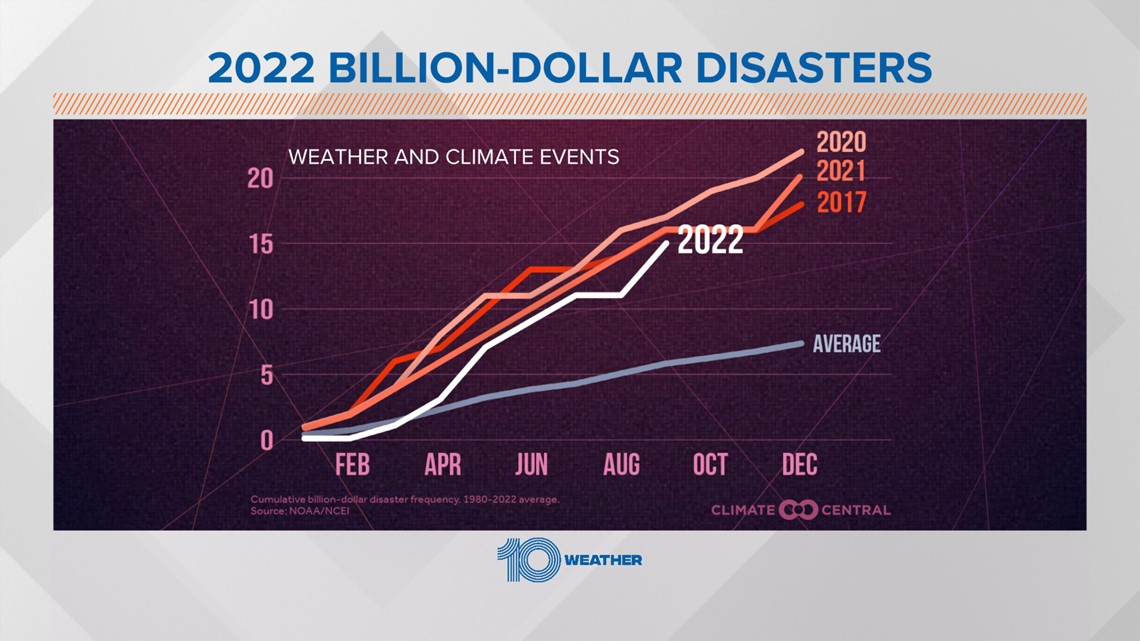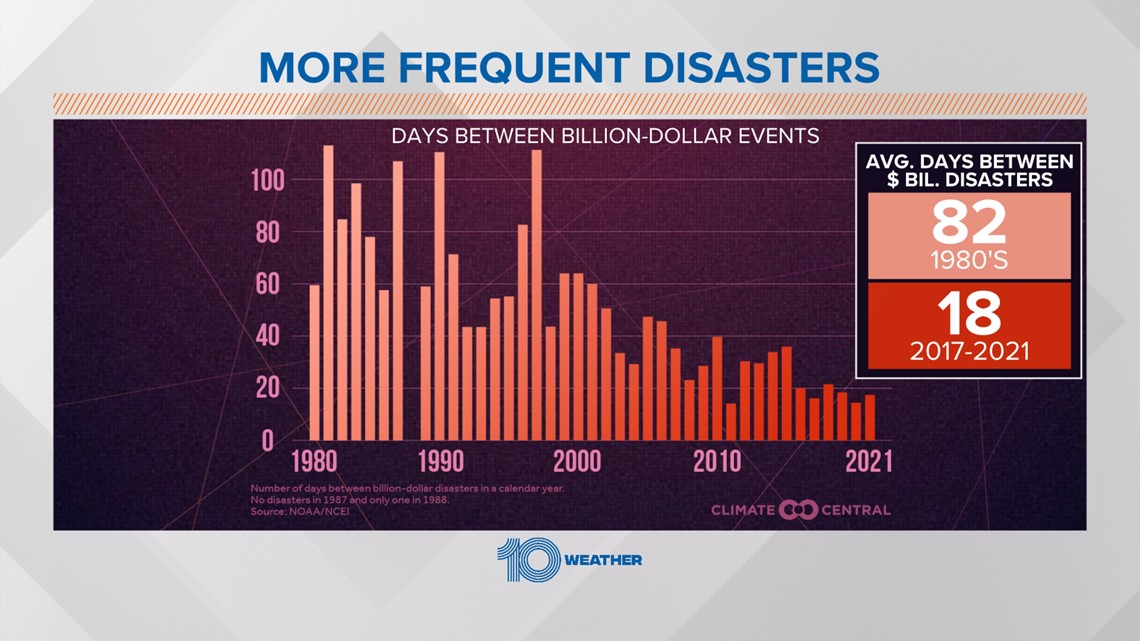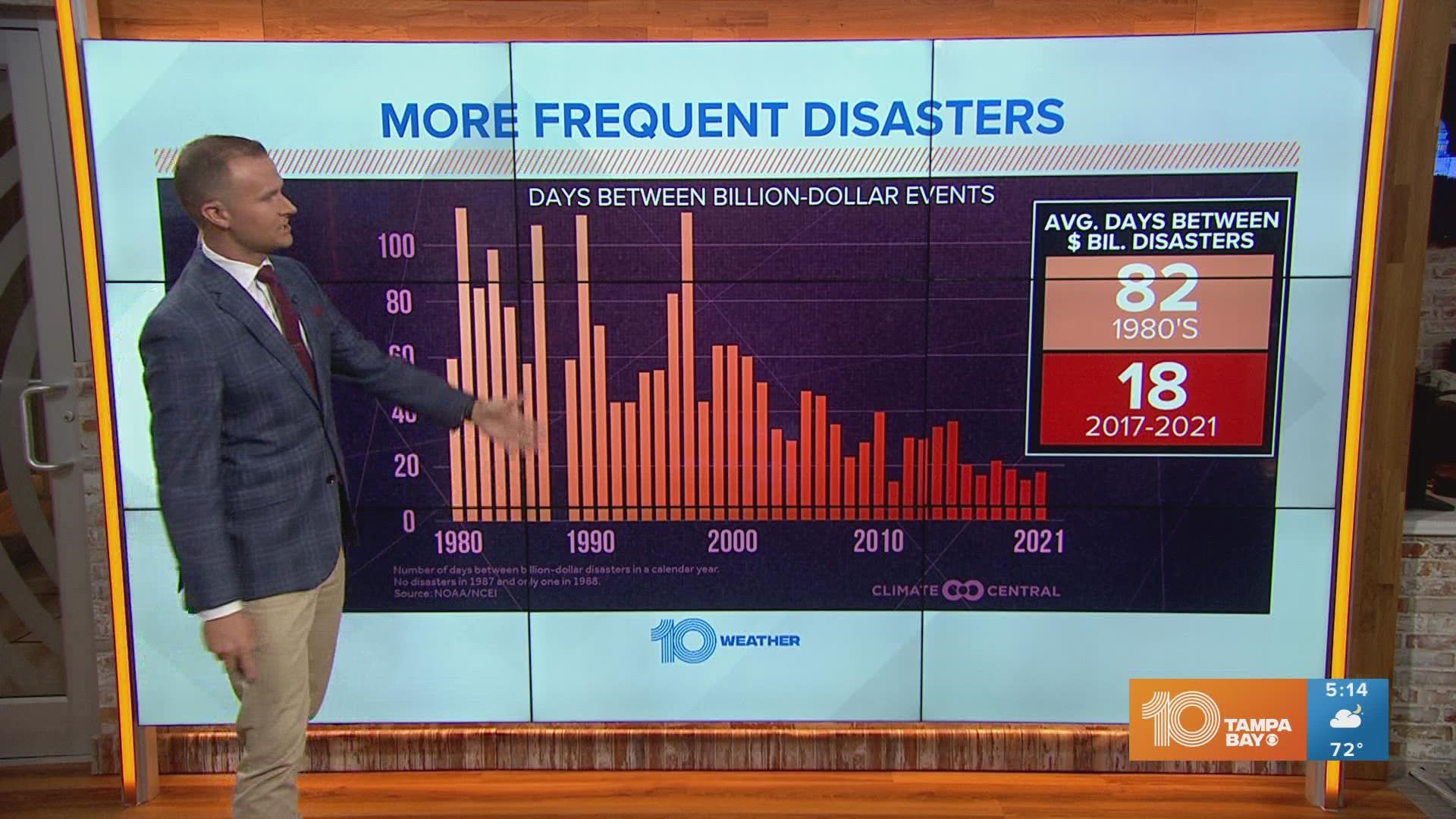ST. PETERSBURG, Fla. — The damage assessment from Hurricane Ian will continue for months if not years into the future but one thing is for sure, the cost of the damage will easily climb into the tens of billions of dollars.
In fact, new data released last week from the modeling firm RMS estimated $67 billion in total insured losses from Florida to the Carolinas due to Hurricane Ian.
So far this year, according to scientists with the National Oceanic and Atmospheric Administration, the United States has been hit with 15 separate billion-dollar weather and climate disasters.
Along with September 2022 being quite warm and dry, there was a noticeable uptick in tropical activity in the Atlantic where the back half of the month was consumed with Category 4 hurricanes Fiona and Ian.
In addition to Ian, Fiona is also one of the 15 disasters this year where the damage will total more than a billion dollars. The other disasters included 10 severe storms, one flooding event, one combined drought and heat wave and one regional wildfire event.


Since the mid-year update issued by NOAA, the most recent billion-dollar disasters are:
- Hurricane Ian
- Hurricane Fiona
- The western wildfires
- The Kentucky/Missouri flooding
- Two severe storm events
These most recent disaster events resulted in at least 340 deaths. Ongoing assessments in the wake of Hurricane Ian and Hurricane Fiona in Florida and Puerto Rico will likely add to this number.
According to NOAA, total losses due to property and infrastructure damage are up to $29.3 billion in 2022 so far — but this does not yet include the costs for Hurricane Ian, the western wildfires and Hurricane Fiona, which may push the 2022 total closer to $100 billion — a total reached in four of the last five years.
More disasters
This growing trend of billion-dollar disasters is unfortunately nothing new. The year 2022 is the record eighth-consecutive year where the U.S. experienced 10 or more separate billion-dollar disasters.
The recent extreme weather costs reflect an increasing trend in billion-dollar disasters across the U.S. Each decade since the 1980s has experienced more billion-dollar disasters and higher costs than the decade before.
According to 10 Tampa Bay's climate partner Climate Central, over the last five years (2017 to 2021) alone, a total of 89 events caused an estimated 4,557 deaths and over $788 billion dollars in damage. That’s about 35% of the $2.27 trillion in total costs of U.S. billion-dollar disasters from 1980-2021.


The long-term (1980–2021) annual average is about seven billion-dollar disasters per year. And 2022 follows the record-shattering annual totals of 22 and 20 billion-dollar disasters in 2020 and 2021, respectively.
More often
The pure number of these extreme weather and climate disasters doesn't tell the entire story. The frequency at which they are occurring is producing even more of a strain on resources available for communities and the country to manage the risks, recover from and ultimately prepare for the next threats.


The time between one billion-dollar disaster and another during the period of 1980-2021 has steadily decreased according to an analysis by Climate Central. In the 1980s, the average time between billion-dollar disasters was about 82 days. In the 2010s, the average time between billion-dollar disasters is 26 days.
Perhaps more staggering, in the last five years (2017-2021), there have been just 18 days on average between disasters that produce more than a billion dollars in damage.
In the latest IPCC reports, it is stated that it is an “established fact” that human-caused greenhouse gas emissions have “led to an increased frequency and/or intensity of some weather and climate extremes since pre-industrial times.” And these trends are projected to continue with additional warming.
Next month in November, nearly 200 nations will meet at the United Nations Climate Change Conference (COP27) to accelerate climate action. Without such progress, we can expect even more frequent and intense billion-dollar disasters in the future.

